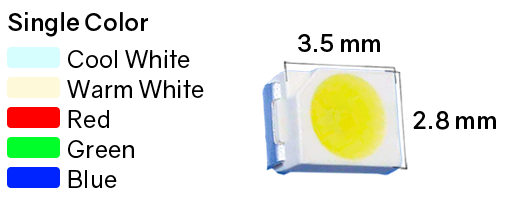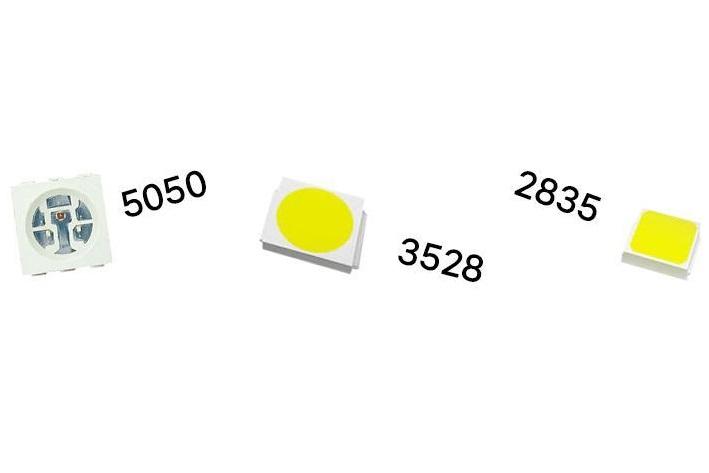-
" href="#smd-3528-br-img-src-https-cdn-shopify-com-s-files-1-2097-6403-files-smd3528_up_2_grande-png-v-1562181223-alt-style-display-block-margin-left-auto-margin-right-auto">SMD 3528

- SMD 5050

" href="#smd-2835-span-style-text-decoration-underline-br-img-alt-src-https-cdn-shopify-com-s-files-1-2097-6403-files-flexible-smd2835-led-strip-e1437433974541_grande-jpg-v-1502742355-style-float-none-display-block-margin-left-auto-margin-right-auto-br-span">SMD 2835
All these numbers! What's going on?
Have you ever been looking for LED light strips and ran across the numbers 2835, 3825, or 5050?
These numbers are less mysterious than you might think.
First off, you might have seen the letters "SMD" preceding these enigmatic numbers. The abbreviation SMD refers to a 'Surface Mounted Device'. That means this is an LED Chip (device) mounted directly to a light strip, without using wires. This surface mounting technology is indeed what makes LED Light Strips possible. The numbers after the SMD simply refer to the physical size of the LED Chip. Take SMD 3528 for example, they are 3.5mm wide and 2.8mm long. Note that size is not proportional to output or performance, and it is not the only difference between LED chip types.
SMD 3528

SMD 3528 Chips are perhaps the most common of all LED light strip chips. They are the least bright and least power-intensive of the three chips we use at HitLights, and are most commonly used for accent lighting, such as above kitchen cabinets and around the crown molding below the ceiling.
3528 chips used to be featured in our Luma5 strips, but those now primarily use lower output 2835 chips which offer the same brightness of 3528 chips but with greatly improved efficiency and lifespan. You can shop our selection of Luma5 strips here.
SMD 5050

SMD 5050 Chips are just barely behind the 3528 chips in popularity. These chips are 5.0mm x 5.0mm. 5050 chips are typically 3 times as bright as 3528 chips. Because they're brighter, strips with 5050 chips are typically used for what we call 'task lighting', and commonly used underneath kitchen cabinets where that light will help you see what you're working on. 5050 strips are often also available in color changing styles, meaning that you can select any color you want with a remote or controller.
5050 chips used to be featured in our Luma10 strips, in both the single color and multicolor versions. You can shop our selection of Luma10 RGB 5050 kits here.
SMD 2835

High output 2835 chips are utilized in our Luma20 strips, which are the brightest (and most efficient) strips that we sell. You can shop our selection of Luma20 strips here.
Editor's note: As a final aside, while the Luma designations initially were associated with certain chip types (Luma5 was 3528, Luma10 was 5050, and Luma20 was 2835) with improvements in LED technology these designations quickly became invalid. Instead, our Luma designations should always refer to the number of lumens per chip - around 5 lumens per chip for Luma5, around 10 lumens per chip for Luma10, and around 20 lumens per chip for Luma20.

Now you should know the difference between the different types of LED chips on our strips.
Talk to us about your project, we are happy to help answer any other questions you might have.
Other blogs that might interest you :
How much light do I need?
Choosing the right color temperature
How to design an LED light strip system



4 comments
Richard Morse
Awesome explanation, a very well put together webpage, spot on for content and presentation – very professional
Mazlah Othman
Thank you.
Thenuka Divanjana
Superb article..got the direct answer for my question…thanx a lot…
Bob T
great article. what about the other chip types? 5630s, etc…